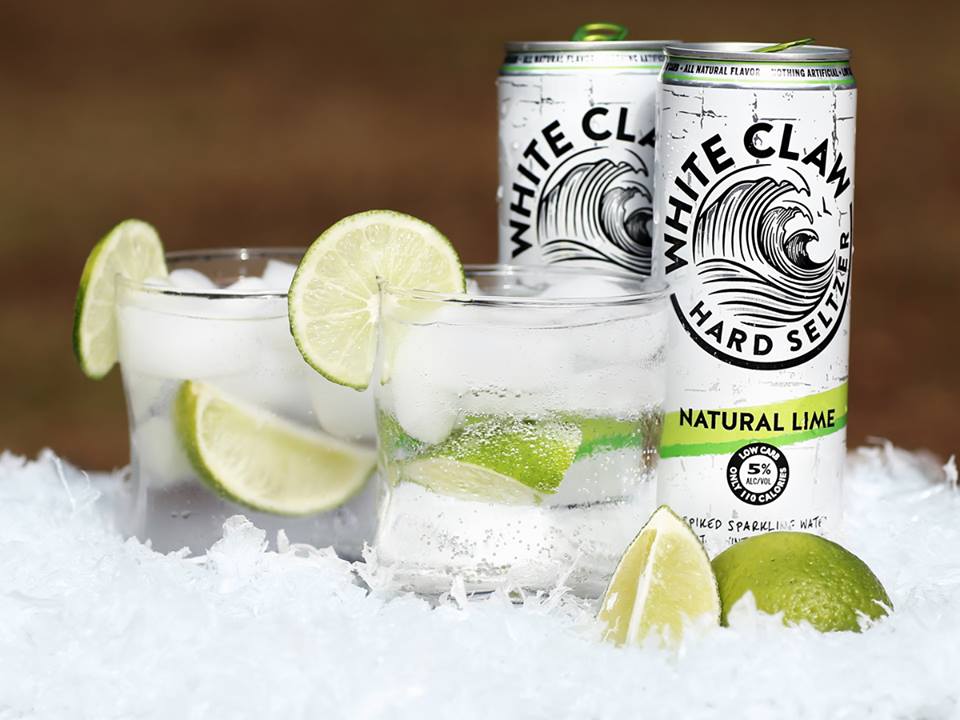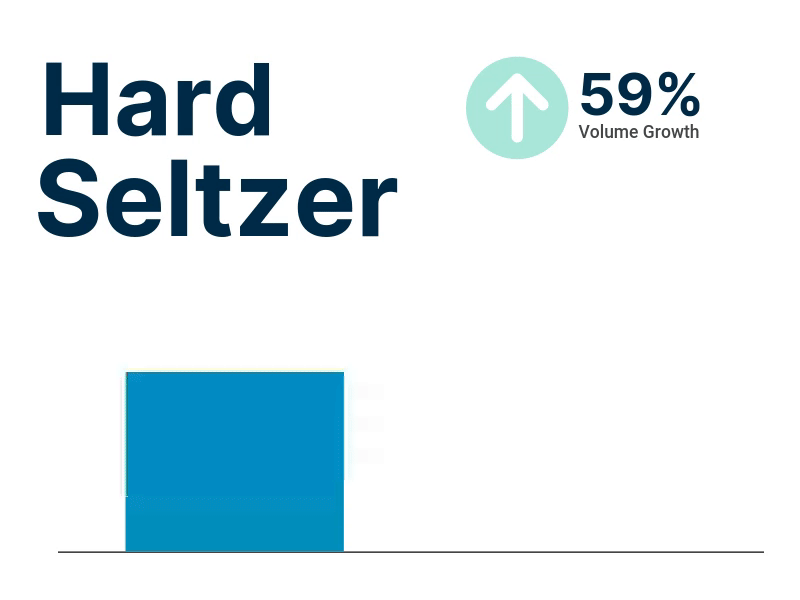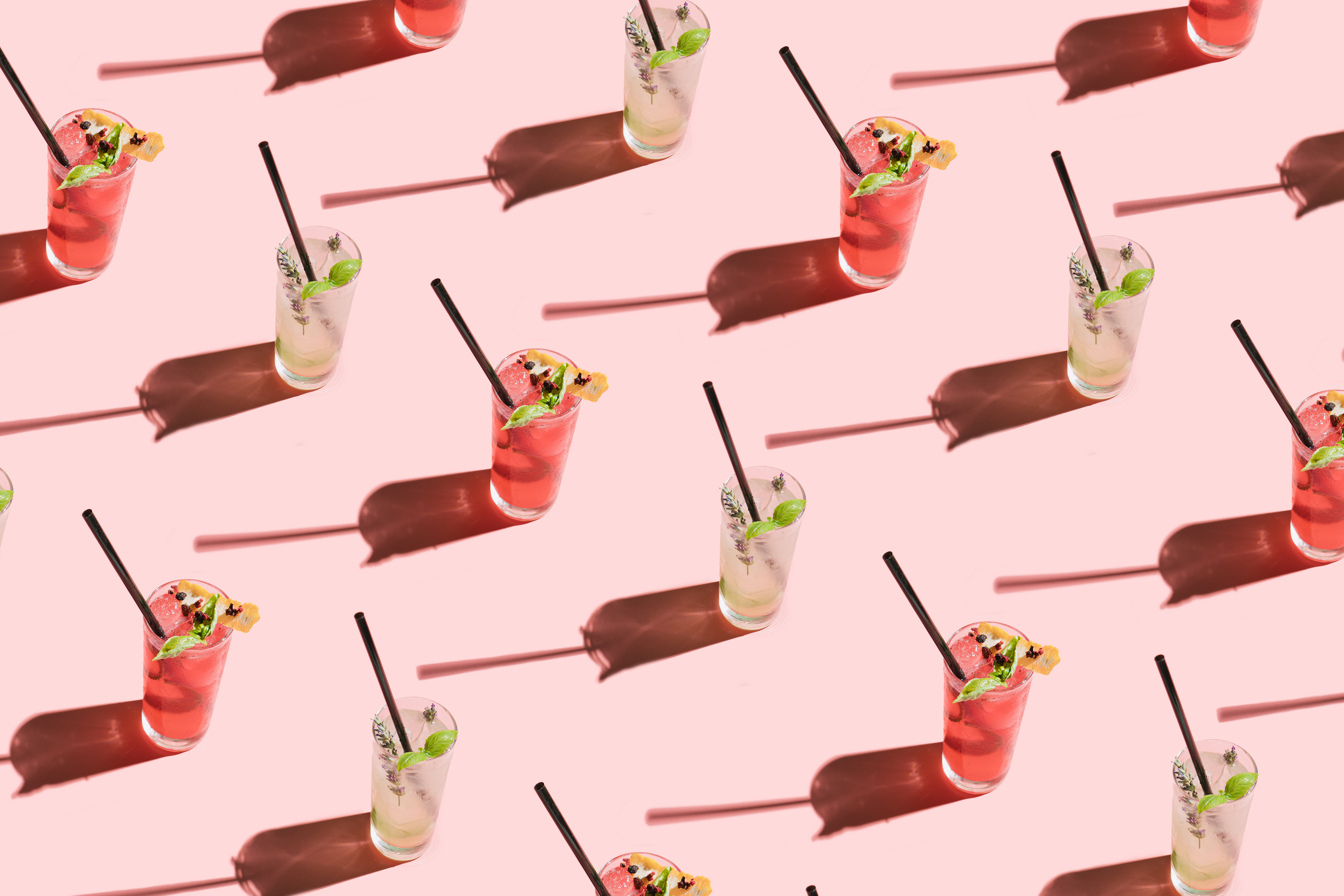Does the great taste and low calorie combination sell well with consumers? The answer is yes, and it comes in cans!
For many, the idea of low-cal drinks means sacrificing one thing for another. These diet-friendly libations don’t have a solid reputation for going hand-in-hand with flavor, but we have some good news for you. In the past couple of years, seltzer trend setters and ready-to-drink cocktail brands are expanding beyond their initial niche and many consumers are making them the go-to for restaurant patios and rooftop bars.
Let’s take a look at the major low calorie categories and see how the data stacks up.
The Hard Seltzer Ascension
Isn’t it crazy to think that White Claw is a household beverage name, having just been introduced in 2016? Not if you look at the data to understand why.
 From 2016-2020, hard seltzer sales grew at a triple-digit annual rate. And while White Claw leads the pack with about 60% of the hard seltzer sales, there are other big players like Truly with ~30%, while brands like Bon & Viv and Smirnoff are hovering in respectable places.
From 2016-2020, hard seltzer sales grew at a triple-digit annual rate. And while White Claw leads the pack with about 60% of the hard seltzer sales, there are other big players like Truly with ~30%, while brands like Bon & Viv and Smirnoff are hovering in respectable places.
Taking a cue from their top-selling light beers, the heavy hitters are getting involved with the seltzer game. You can now buy hard seltzer flavors from big brands like Jose Cuervo, Michelob Ultra and Bud Light. When the numbers look as good as they do for White Claw and Truly, it was only a matter of time before the others tried to catch up. Check out these recent figures that show the seltzer sales weren’t just a fad:

The Canned Cocktail Craze
As we mentioned in one of our previous posts, from just January to March 2021, ready-to-drink cocktail sales volume exploded by 109%.
With hard seltzers cruising at high-sales altitudes, we knew it wouldn’t be long before more ready-to-drink cocktails caught up to speed. The pandemic is likely a contributing factor, as consumers want to have a tasty cocktail but need a backyard option instead of the neighborhood bar.
.gif?width=800&name=rtd-july-20-june-21%20(1).gif) While these options certainly pack a delightful flavor punch, they’re a bit trickier to navigate for the low-calorie varieties. The big sellers like AB InBev’s Cutwater Spirits and Diageo’s Crown Royal both top 200 calories and certain brands can climb even higher, but if you’re looking for low-cal it can be found! Ozha’s Mimosa cocktail comes in at 140 calories, while Fling Craft Cocktails from Boulevard Brewing offer 7 flavors and range from 100-120 calories.
While these options certainly pack a delightful flavor punch, they’re a bit trickier to navigate for the low-calorie varieties. The big sellers like AB InBev’s Cutwater Spirits and Diageo’s Crown Royal both top 200 calories and certain brands can climb even higher, but if you’re looking for low-cal it can be found! Ozha’s Mimosa cocktail comes in at 140 calories, while Fling Craft Cocktails from Boulevard Brewing offer 7 flavors and range from 100-120 calories.
So what does this mean for those of us in the business?
First, it’s a good idea to start catering to this newfound desire in the customer. These low-cal options are no longer relegated to summer afternoons on the dock, either. Provi data has shown high sales numbers all across the board for these products throughout the year.
Looking at that data from a business perspective, it adds up (and then some). Generally speaking, less alcohol means more purchasing. These easy-to-drink libations cater to session-style drinking, as opposed to the ‘one and done’ mentality that sometimes comes with heavier drinks or cocktails.
A larger, more macro perspective is equally relevant, though. Consumers like things that are seen as healthy. With bold, bright flavors and less calories to bog you down, it seems this trend is here to stay.
Our advice? Stock up on low-cal, and keep it flowing.



Comments